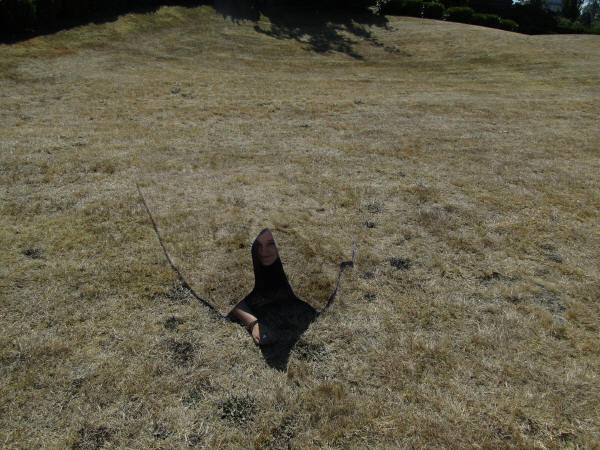Have you ever wondered, if the Cloak of Invisibility from the Harry Potter series could actually exist in real life? Have you wished for it? Well, the technology is real. Quantum Stealth, or often cited as the Invisibility Cloak, is a material developed by Hyperstealth Biotechnology Corp. While it is not actually making you invisible, it gives the illusion of invisibility to its users.
The CEO of the company, Guy Cramer, says that Quantum Stealth could eliminate the visual, anti-infrared night vision, and shadow of the wearer. The technology operates similar to fiber optic cable technology in a way it bends light waves around it. This way, the wearer is hidden from view.
![]()
There are many benefits and potential uses of the technology. For starters, the advanced material could help soldiers who conduct daily operations to escape the enemy’s notice. Users could theoretically use the technology to conceal planes, tanks, submarines, and even an entire building.
What is the most impressive part is that the technology and the material do not require battery energy, projectors, or cameras.
How does it work?
It is important to understand the material and how does it work. The material itself is called Invisibility Cloak. It works by bending waves around the objects. Let’s try with an example. Imagine seeing a plain jungle, for instance, without knowing what is hidden in the background.
Guy Cramer is the brain behind the technology. He is the grandson of Donald Hings, who was the inventor of the walkie-talkie.
He is the CEO of HyperStealth Biotechnology. The technology is still in prototype stage, and the company only shares mock-ups because of the security purposes and reasons.
They have made it all possible through a material with a negative reflective index. They have 73 claims approved by the World Intellectual Property Office (WIPO) for Quantum Stealth.
Cramer, the CEO, explains it best. He says, “There is no power source. It is paper-thin and inexpensive. It can hide a person, a vehicle, a ship, spacecraft, and buildings. The patent discusses 13 versions of the material, and the patent allows for many more configurations. One piece of Quantum Stealth can work in any environment, in any season at any time of the day or night, something no other camouflage is capable of.” It is also capable of concealing the infrared signature of what is behind it, which would throw off targeting optics in missiles that use heat to target an object”.
This sounds like a dream come true, right? Well, there are still improvements to be made. For starters, the user or object that needs to be concealed, has to be at a certain distance away from the sheet to hide.
Guy says there is 80% probability of becoming a camouflage outfit in the future. In any case, it is exciting to see whether this technology could ever exist and be utilized.
Is Invisibility possible in the future?
The reality is that invisibility is no longer confined to fictional worlds. The company has several patents and applications that are on the wait list.
Those include being used to create items such as riot shields, camouflage nets, parachutes, or pop-up tents. The company also applied for a patent that is related to Quantum Stealth. Called Solar Panel Amplifier, it uses the same lens material that is a key component of all four patents and has demonstrated to provide more than triple the energy output of solar panels.
![]()
Hyperstealth Biotechnology Corp is a company set up in 1999. It is a leading supplier of camouflage patterns to militaries around the world. They have more than 14,000 pattern designs which were all created by Guy Cramer. Now, he is on the path to making invisibility possible.
He began developing Quantum Stealth in 2011. By October 2019, he had already applied for four patent applications related to the material.
He believes that “true invisibility was thought to be impossible by most physicists. But it is possible”.
The technology can make things invisible through a lenticular lens, a corrugated sheet in which each ridge is made up of a convex lens.



